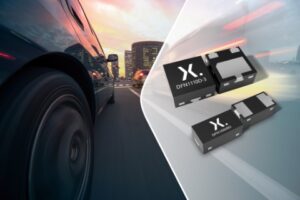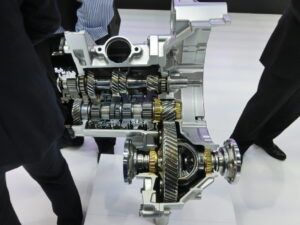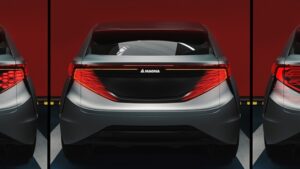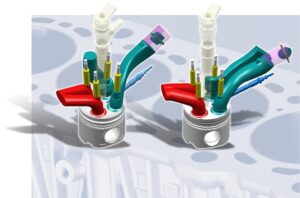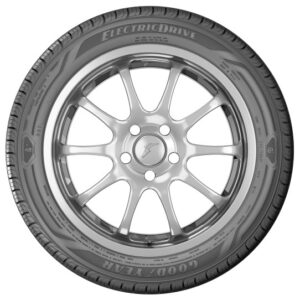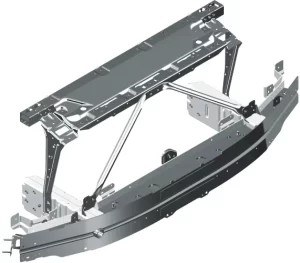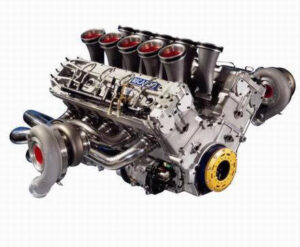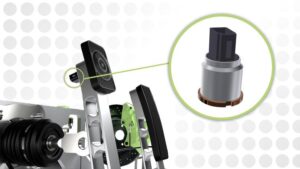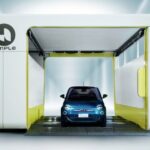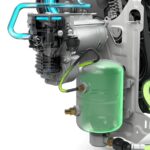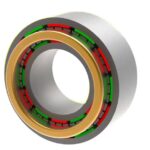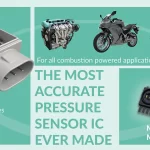
The new Audi A5 Avant e-hybrid quattro and the Audi A5 Sedan e-hybrid quattro are both available in two power levels: 220 and 270 kilowatts. The vehicles are powered by a 2.0 TFSI engine with an output of 185 kW (252 PS) and an electric motor that delivers up to 105 kW.

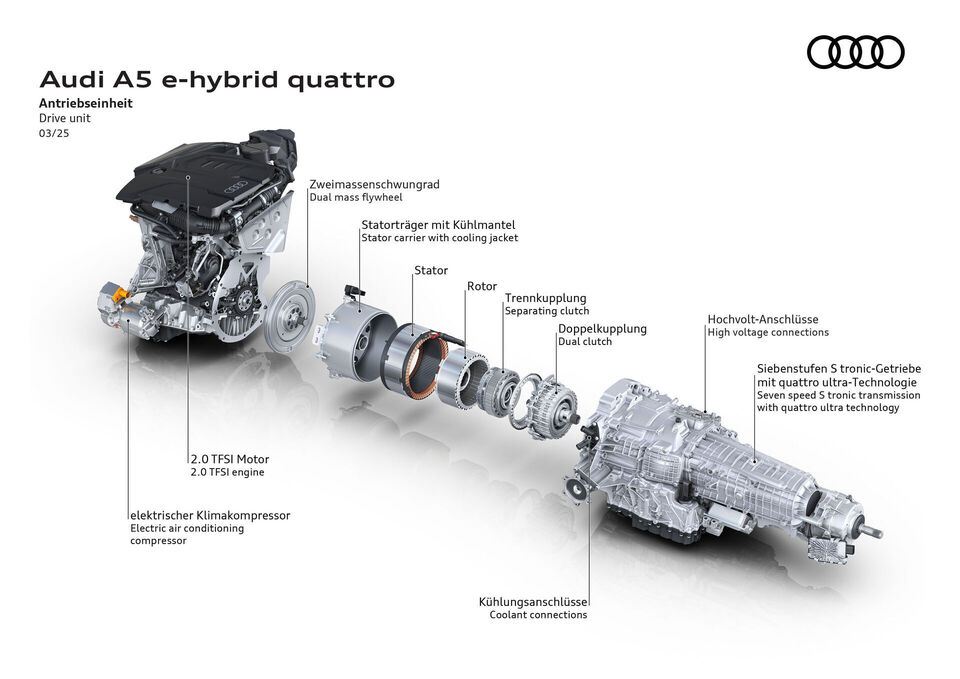
The electric drive is provided by a permanently excited synchronous motor with a peak output of 105 kW. The electric motor is integrated into the housing of the seven-speed S tronic. The full system torque is available even at idle speed – 500 Nm in the 270 kW variant and 450 Nm for the 220 kW variant. The power electronics (pulse inverter) used in the plug-in hybrid models of the A5 are a new development. The pulse inverter is smaller, lighter, and more efficient, thus reducing electrical consumption. Consumption in hybrid mode is therefore also lower.


The heart of the new A5 plug-in hybrids is the new high-voltage battery (HV battery) at the rear of the vehicle. At 25.9 kWh (20.7 kWh net), Audi has increased its capacity by roughly 45 percent as compared to its plug-in-hybrid predecessor, the A6 TFSI e. In contrast, the required installation space has only increased slightly in view of the significantly increased capacity. The HV battery measures 992 × 996 × 177 millimeters (39.1 x 39.2 x 7.0 in). The further developed and significantly optimized interaction between the mechanical friction brake and energy recovery via the electric motor has also increased regenerative braking performance.
The battery cells for the A5 e-hybrid are arranged in a single layer due to the available space in the rear section of the car. Each prismatic cell stores approximately 46 percent more energy than the cells previously used in low-floor vehicles in the C segment. The cells each have a charge capacity of 70 ampere-hours (Ah). The raw material composition of the cells allows for higher energy density. The battery’s energy is bundled into 17 cells, known as stacks. Six of these stacks form a unit and are connected in sequence.
As far as the arrangement of the battery cells is concerned, Audi is pursuing a new approach with cell-to-pack. In this process, the cells are no longer placed in a battery module but are glued directly into the battery housing. The resulting higher packing density means that the energy content and energy density of the HV system can be increased while taking up less space. Thanks to further technical developments in cell chemistry, higher electrical output is available compared to the previous generation, even at a low state of charge and low outside temperatures.
The maximum possible AC charging power has been increased from two-phase 7.4 kW to three-phase 11 kW, depending on the respective infrastructure. With this increased power, the HV battery’s zero-to-100-percent charging time is lowered to just 2.5 hours. A charging cable (mode 3, plug type 2) for convenient charging at home and on the road is included as standard.
Audi has also significantly increased the regenerative braking performance, and drivers can now adjust the degree of thrust recuperation in EV mode using paddles on the steering wheel. The new A5 e-hybrid essentially runs on electric power for as long as possible to fully utilize the available battery charge to the driver’s destination. When this function is activated, the vehicle recovers energy automatically. This is based on route data stored in the navigation system. The new A5 e-hybrid quattro can also recover energy automatically without active route guidance.

